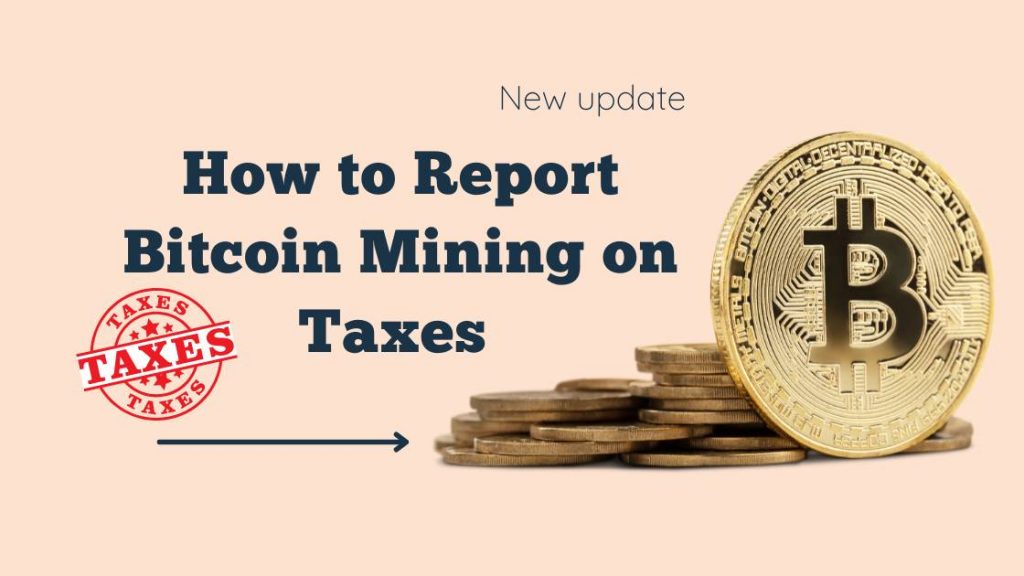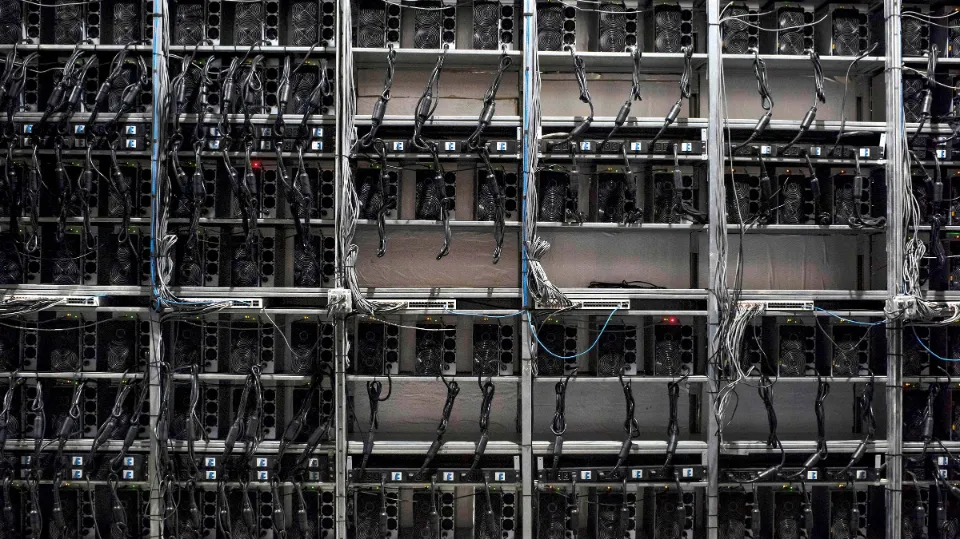Are you interested in solar-powered Bitcoin mining? We’ve put together everything you need to know about bitcoin mining with solar panels using a straightforward Q&A style approach.
When it comes to resolving the bitcoin mining issues caused by conventional electricity, solar energy is thought to be a green and eco-friendly solution. When fully utilized, it is thought to be a source of clean or green energy that could eventually take the place of conventional energy.
With technological advancements in bitcoin mining & solar power, the future of bitcoin and other cryptocurrencies seems green. The real next big thing to watch out for is the combination of both.
Get the lowdown on everything from solar bitcoin mining rig options to whether you might qualify for tax breaks by mining cryptocurrencies sustainably by reading on.
What is Bitcoin Mining?

Bitcoin mining is the process by which a vast network of computers running the Bitcoin code cooperate to make sure that transactions are accurate and added to the blockchain of the cryptocurrency in a legitimate manner. Bitcoin is mined using powerful computers whose sole purpose is to run algorithms that solve the underlying math problem, earning its owner a Bitcoin block and the associated profit. Bitcoin mining is typically a large-scale commercial endeavor carried out by businesses using data centers with specialized servers. Warehouses can house a large number of mining computers.
Why Do We Need Solar Energy to Mine Bitcoin?
With more than 91 terawatt-hours annually, or about 0.5% of the world’s electricity consumption, Bitcoin energy consumption has multiplied tenfold over the past five years. The movement for greener energy and lower electricity consumption has arisen as a result of the alarming rate of energy consumption.
The two major problems experienced in Bitcoin mining are:
- Electricity Cost and Consumption:
Between 86,000 and 286,000 KWh of energy are needed to mine one Bitcoin, which is a startling amount. Miners invest about $35,000 to create a new Bitcoin at an average cost of 5 cents per Kwh. The truth is that miners only make money when they complete challenging puzzles or when they join mining pools; the former requires a significant amount of electricity use, which results in miners incurring significant electricity costs.
The profitability of mining bitcoins is being questioned because 90–95 percent of the costs are related to energy.
- Effects of Mining on the Environment:
Because it uses so much electricity, bitcoin mining has become a significant cause of climate change. Bitcoin mining contributes to 2°C of global warming by emitting over 57 million tons of CO2 annually. Bitcoin mining harms the environment by producing over 24 kilotons of hazardous e-waste annually in addition to the release of lethal gasses.

Due to regular electricity’s dual drawbacks, mining bitcoins has become more dependent on environmentally friendly energy sources. But is solar energy any better? Does it work well for mining Bitcoin? Let’s find out.
Pros of Solar Crypto Mining
Solar energy costs practically nothing extra and doesn’t need to be maintained after the initial cost of purchase and installation. Between 30 and 50 panels are needed to produce the required amount of electricity, and each panel costs about $35,000. This is about the same cost as what is needed to mine one Bitcoin, so the investment is unquestionably worthwhile. As a result, switching to solar energy is significantly less expensive than paying enormous sums of money every year to get the same results.
Some other advantages of solar energy over regular electricity in cost are:
- After the initial payback period, mining is free for almost 25 years.
- Countries like the United States, Canada, and others have negative power prices, which make it possible to profit from extra electricity produced.
- 30% off the cost of installation is possible with the federal solar tax credit. Mining is made more lucrative by further reducing costs.
- Mining operations are unaffected because solar panels, as opposed to conventional electricity, produce energy even in extreme weather.
- Since there are no limits to what can be done with solar energy, both its cost and availability will continue to decline.
Global efforts to combat climate change have resulted in funding for renewable energies and changes to regulations. The enormous amounts of carbon emissions caused by mining operations are hoped to be offset by switching to solar energy. Already, 56% of the total energy used by bitcoin miners comes from renewable sources.
Some advantages of solar energy as opposed to regular electricity in nature are:
- It enhances air quality while being pollution-free.
- It contributes to the fight against climate change because it does not emit greenhouse gases.
- It decreases reliance on fossil fuels.
- Solar energy does not require water resources, unlike fossil fuels, which reduces water pollution and has no impact on the world’s water supply.
- Land pollution frequently happens during the extraction of fossil fuels for the production of electricity. Solar energy is better because it doesn’t pollute the soil.
Solar energy improves public health, lowers health care costs, and decreases premature mortality in addition to its cost- and climate-change-fighting benefits.
Bitcoin mining using solar power is a sustainable, environmentally friendly solution. A power grid can be disrupted for a variety of reasons as well. The majority of them are however immune to solar power! Solar power offers a strong, dependable source of energy once your system is fully installed.
Solar energy offers a consistent source of energy that is solely yours, which is ideal if you enjoy independence and self-reliance.
Cons of Solar Bitcoin Mining
The cost of initial investment is the main disadvantage of solar-powered cryptocurrency mining. It is common knowledge that using the grid is inexpensive to begin with because you only need to pay for the electricity you use, not for the infrastructure required to run it.
Concerns about how much electricity is generated by solar panels may also exist. For instance, a period of bad weather can considerably reduce the amount of solar power your panels generate.
Because solar infrastructure is expensive to purchase, you’ll need to commit to bitcoin mining for a number of years before you recover the costs of your initial investment. Additionally, in order to recoup costs, you’ll need to mine on a sizable scale.
Your ability to generate solar power is also constrained by the amount of space you have for solar panels. Depending on your living situation, installing enough solar panels to power your bitcoin operation might not be possible.
How Many Solar Panels Does It Take to Mine Bitcoin?

The quantity of bitcoin you need to mine will determine how many solar panels you’ll need, as well as what percentage of your energy you want to be generated by solar energy. It also depends on things like where you live, the shape of your roof, how much space you have for solar panels, and the kind of solar panels you want to purchase.
To run a single mining rig, however, typically requires 450 to 500 Watts. When using multiple graphics processing units (GPUs), this can increase to 900 to 1,500 Watts.
Installed solar panels in a sunny area of the U.S. will produce around 229 average power output per square meter of solar panel.
Taking into account cloud cover and the incapability of solar energy production at night, it is estimated that bitcoin miners would require solar panels covering six to twelve square meters of space. Additionally, a battery system is required to store energy that will enable the GPUs to function through the night or during periods of heavy cloud cover.
What Does a Solar Bitcoin Mining Rig Consist Of?
A solar-powered bitcoin mining rig has the following components:
- A solar power source
- A motherboard (most motherboards will work as long as they have the capacity to connect with multiple GPUs)
- A cooling system
- GPU cards
- A 100 to 250 GB hard disc drive to accommodate the crypto wallet
- Risers (specialist extension cards or power adaptors)
- A power switch
How Much Does a Solar-powered Bitcoin Mining Rig Cost?
A bitcoin mining rig’s total cost can vary significantly. The GPUs and ASIC Miners are typically the biggest expense for most people. The more cryptocurrency that can be mined and the greater the potential reward, the more GPUs are running. GPU prices range from about $300 to more than $1,000.
However, when calculating rates of profit, you should take into account the initial cost of the GPUs.
A bitcoin mining rig typically costs between $3,000 and $10,000 or more.
While the use of solar power reduces operating costs, some factors must be considered in transitioning to solar energy:
- Region:
In using solar energy, this is a crucial factor to take into account. It should go without saying that sunnier areas will produce more solar energy and are therefore preferred. The number of solar panels needed depends on the amount of sunlight (peak sun hours) received by a location. Setting up a mining operation that is sustainable requires this.
- Power required:
The quantity of solar panels needed is also influenced by this factor. When using multiple GPUs, the minimum power requirement for a mining rig increases to at least 450–500 watts. Calculating how much energy is needed to effectively run the mining rig is important.
- Space:
This is yet another requirement for constructing a renewable mining rig. It takes between 528 and 704 square feet of roof space to install 30 to 40 typical solar panels. This is yet another calculation that is required and that must be made prior to the transition.
Although switching to green energy is frequently recommended, it is crucial to first weigh the pros and cons and ascertain whether such a transition is even feasible. The best mining strategy can then be chosen after careful consideration.
Where is Solar-powered Crypto Mining Taking Off?
More than any other nation, the U.S. is the global leader in cryptocurrency mining. When it comes to solar power generation, the following cities have the highest solar power generation per capita rates.
- Honolulu, HI
- San Diego, CA
- Albuquerque, NM
- San Jose, CA
- Burlington, VT
- San Antonio, TX
- Las Vegas, NV
- Phoenix, AX
- Riverside, CA
- Denver, CO
Are There Any Tax Breaks for Solar-powered Crypto Mining?
You ought to be able to deduct the cost of the operating infrastructure for your cryptocurrency mining operation if it qualifies as a business.
For homes and businesses that have solar panel installations, there are a variety of grants and tax exemptions available. A 30% tax credit is currently being offered by the American government for solar systems installed through 2032. By 2034, this tax credit will be reduced to 22% from 26%.

Read More: How to Report Bitcoin Mining on Taxes
Solar Bitcoin Mining Examples
Currently under construction is the first bitcoin mine that will run entirely on solar power. Tesla will use solar energy to run bitcoin mines. Texas is using Tesla solar panels and Megapack batteries to mine bitcoin using only renewable energy.
In Texas, United States, construction began in April 2022. A 100% off-grid renewable energy bitcoin mining facility is being built by Blockstream and Block. It consists of 4 Tesla Megapack battery units with a combined storage capacity of 12MWh and 3.8MW of solar panels.
The technical details were:
● The plant will likely cost $12 million USD in total.
● Out of the 3.8MW of solar power installed, 1MW will be used to mine bitcoins and 2.8MW will be used to charge the batteries;
● Batteries are required so that the solar-powered bitcoin mine can operate 24/7;
● The mine will be powered by batteries 75% of the time and by solar panels 25% of the time, assuming that the solar plant operates for 2200 equivalent hours. Hence the ratio of 2.8MW batteries / 1MW bitcoin mining;
● ~178MWh of energy will be required to mine 1 bitcoin.
Conclusion: Bitcoin Mining Future
With improvements in solar energy and bitcoin mining technology, the future of bitcoin and other cryptocurrencies appears to be environmentally friendly. The real next big thing to watch out for is the combination of the two. Future economic development and infrastructure for zero-emission power can be supported by bitcoin mining.










